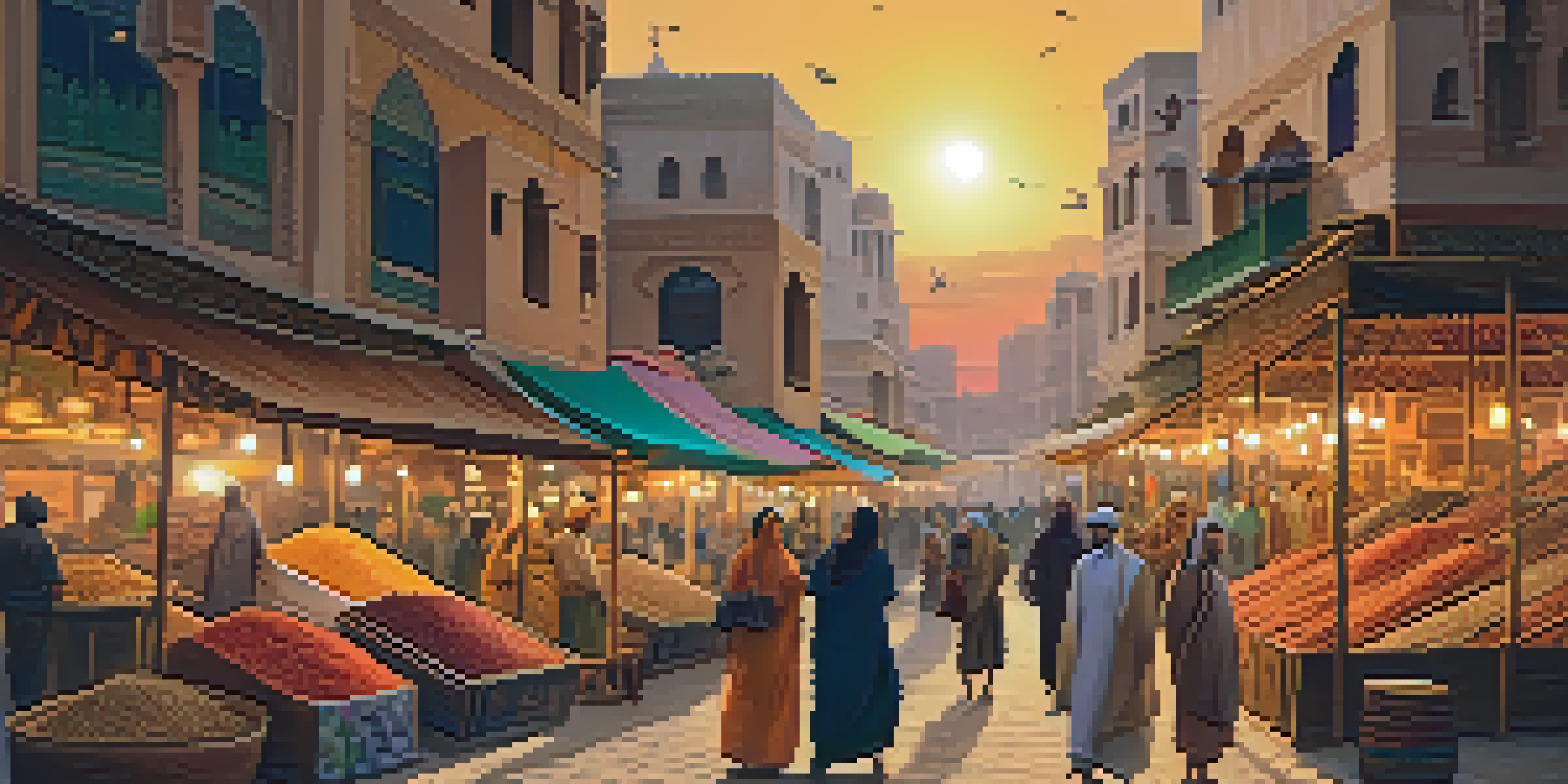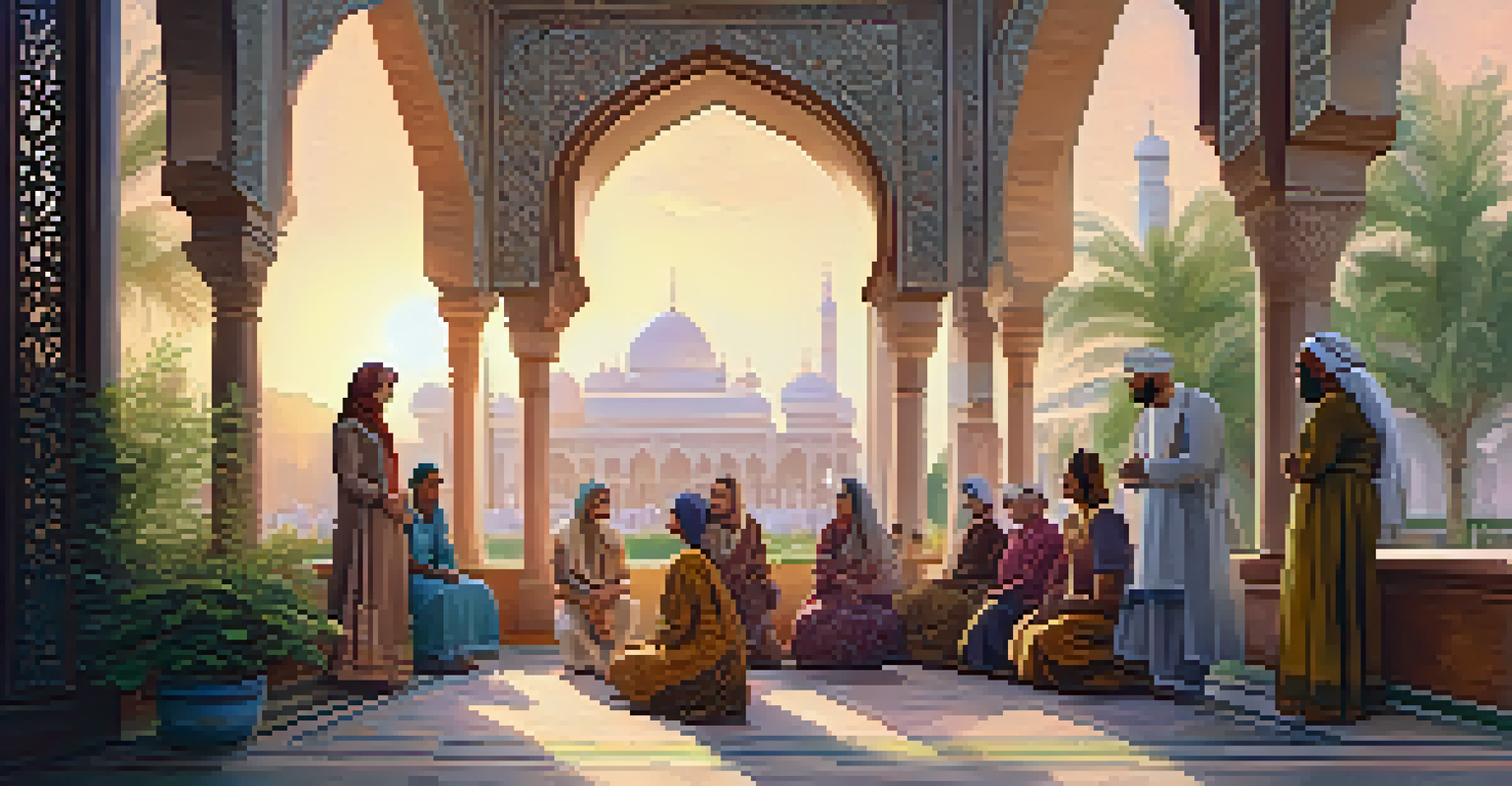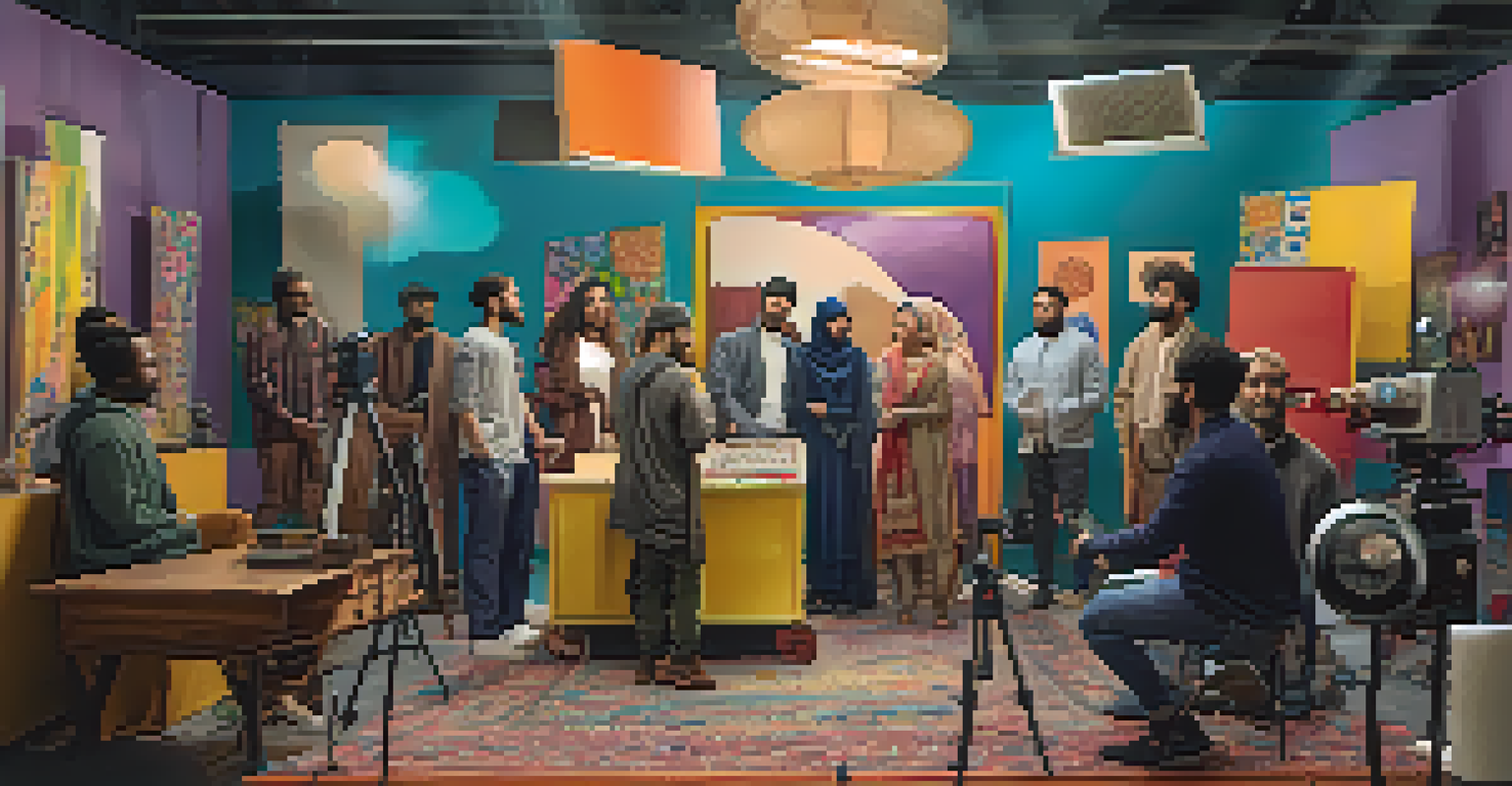The Impact of Islam in Hollywood: Stereotypes vs. Reality

The Historical Context of Islam in Hollywood
Islam's representation in Hollywood has evolved over the decades, influenced by socio-political events. In the early days, depictions were often simplistic or exoticized, reflecting Western misunderstandings. The rise of global conflicts, particularly post-9/11, further shaped the narratives, often leading to negative stereotypes.
The media's portrayal of Muslims plays a significant role in shaping public perceptions and can either reinforce stereotypes or encourage understanding.
These portrayals frequently cast Muslims as antagonists or terrorists, which can create a skewed perception among audiences. However, this is not a new phenomenon; similar patterns have been observed with other minority groups throughout film history. Understanding this context is crucial to recognizing why certain stereotypes persist.
As the film industry becomes more globalized, filmmakers are increasingly aware of the need for accurate representation. This awareness can foster more nuanced storytelling that challenges the traditional narratives while providing a more authentic view of Muslim cultures and experiences.
Common Stereotypes of Muslims in Film
One of the most pervasive stereotypes is the portrayal of Muslims as violent extremists. This trope not only misrepresents the vast majority of Muslims but also reinforces harmful prejudices. When films depict characters based solely on their religion as villains, it fosters a culture of fear and misunderstanding.

Another common stereotype is the depiction of Muslim women as oppressed or submissive. This narrative overlooks the diversity and strength of women in Muslim societies, many of whom are leaders and change-makers. Such portrayals contribute to a one-dimensional view that fails to capture the complexity of their lives.
Stereotypes Shape Muslim Representation
Negative portrayals of Muslims in Hollywood often reinforce harmful stereotypes, impacting public perception and societal attitudes.
These stereotypes can have real-world consequences, influencing public opinion and policy. When audiences are repeatedly exposed to these narrow representations, it can lead to generalizations that affect how Muslims are treated in society, from everyday interactions to legislative decisions.
Positive Representations of Islam in Cinema
Despite the prevalence of negative portrayals, there are notable films that offer a more positive and nuanced view of Islam. Movies like 'The Kite Runner' and 'A Separation' showcase the rich cultural heritage and diverse experiences of Muslim communities. These films invite viewers to empathize with characters rather than see them through a lens of fear.
Storytelling has the power to bridge cultural divides and foster empathy, allowing us to see beyond the stereotypes that often dominate our perceptions.
Documentaries and independent films have also played a pivotal role in changing perceptions. By focusing on real stories and authentic voices, these productions highlight the everyday lives of Muslims, breaking down stereotypes and fostering understanding. They remind us that Muslims are individuals with hopes, dreams, and challenges just like anyone else.
Moreover, the rise of Muslim filmmakers and actors is helping to shift the narrative. These creators bring their unique perspectives to the screen, challenging existing stereotypes and providing a platform for authentic stories that resonate with a wider audience.
The Role of Muslim Filmmakers and Actors
Muslim filmmakers and actors are increasingly taking the reins to tell their own stories. This is crucial in countering stereotypes and providing authentic representations of their communities. By stepping into roles that showcase their culture and experiences, they can reshape the narrative in Hollywood.
For instance, filmmakers like Riz Ahmed and Hasan Minhaj use their platforms to challenge misconceptions about Islam. Their work not only entertains but educates audiences, fostering a greater understanding of the complexities within Muslim identities. This representation is vital in creating a more balanced and inclusive media landscape.
Positive Narratives Are Emerging
Films like 'The Kite Runner' demonstrate a shift towards more authentic and nuanced representations of Muslim cultures and experiences.
As more Muslim talent emerges in the industry, Hollywood can expect to see a shift in storytelling. This change could lead to richer narratives that reflect the diversity of Muslim experiences instead of relying on tired clichés.
Impact of Media on Public Perception of Islam
Media plays a significant role in shaping public perception, and Hollywood is no exception. Films and television shows can influence how audiences view Muslims, often reinforcing or challenging existing stereotypes. This impact is particularly strong when it comes to fear-based narratives that dominate mainstream media.
Research shows that consistent exposure to negative portrayals can lead to increased prejudice and discrimination against Muslims. Conversely, positive representations can foster empathy and understanding, encouraging viewers to see beyond stereotypes. This highlights the responsibility of filmmakers to portray characters authentically and thoughtfully.
As consumers of media, we also have a role to play. By supporting films that provide honest representations of Islam, we can help shift the narrative and promote a more inclusive understanding of diverse cultures.
The Future of Islamic Representation in Hollywood
Looking ahead, the future of Islamic representation in Hollywood seems promising, albeit challenging. The increasing demand for diverse storytelling is pushing filmmakers to explore narratives that include Muslim perspectives. This shift is essential in fostering a more inclusive media landscape that accurately reflects society.
However, challenges remain, particularly regarding the resistance to change within the industry and the prevalence of stereotypes. To overcome these obstacles, it is crucial for audiences to advocate for more authentic representations, supporting projects that prioritize inclusivity.
Muslim Creators Challenge Narratives
The rise of Muslim filmmakers and actors is crucial in reshaping narratives, promoting diverse stories, and countering stereotypes in the industry.
Ultimately, the evolution of Islamic representation in Hollywood will depend on collaboration between creators, audiences, and industry decision-makers. By working together, we can pave the way for richer narratives that honor the diversity of Muslim experiences and challenge harmful stereotypes.
Conclusion: Moving Beyond Stereotypes
In conclusion, the impact of Islam in Hollywood is a complex tapestry woven from both stereotypes and reality. While negative portrayals have dominated the narrative for far too long, there is a growing movement towards authentic representation. This shift is vital not only for the film industry but for society as a whole.
As we continue to engage with media, it's essential to critically assess the stories being told and support those that challenge stereotypes. By amplifying diverse voices and narratives, we can foster understanding and build bridges across cultures.

Ultimately, moving beyond stereotypes is not just the responsibility of filmmakers; it is a collective effort. Together, we can create a more inclusive and accurate representation of Islam in Hollywood that resonates with audiences worldwide.